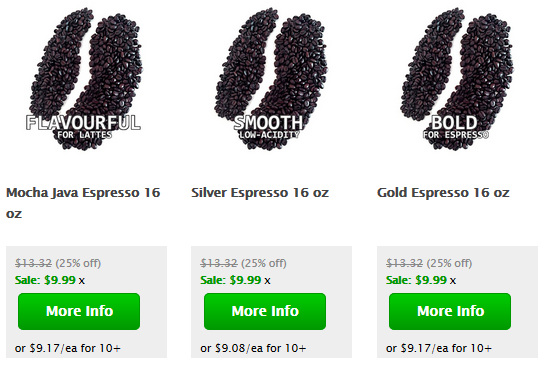A shot of espresso is considered to be one (fluid) ounce, while a double shot is two (fluid) ounces. A fluid ounce is 30 mL (as opposed to an ounce by weight being 28 g).
This volume refers to the espresso shot volume (water) that gets passed through the espresso.
The weight of the coffee required for a single shot is typically 7 grams for a single shot, and 14 grams for a double shot. This can be adjusted up to 9 grams for a single and 18 grams for a double, depending on your machine and how strong you like your coffee.
A double shot should take between 20-30 seconds to brew. Most machines are calibrated to apply a given amount of pressure (measured in "bars") to a given volume of water, which is resisted by the espresso in the portafilter. An espresso that is ground too fine will resist the flow of water too much, while a grind that is too coarse will let the water pass through too quick and result in an underextracted brew.
A double shot is typically used in most espresso-based recipes, including Cafe Mochas and Dulce de Leches. This ensures that the flavor of the coffee comes through strong enough relative to the other ingredients. When making more complex drinks or larger portions like an Espresso Granita, you'll want to make sure to use a double shot per 8-12 oz of finished drink.
For cold drinks, make sure to chill your shots in the fridge before combining with the other ingredients to make sure the warmth from the espresso doesn't turn the drink a luke warm flavor.
Coffee Beans in Espresso
The flavor and intensity of the espresso shot will vary depending on which beans are used - a coffee known for a full body such as those from Kenyan, Sumatran or Guatemalan will typically contain more dissolved solids and taste more "intense". Fuller bodied coffees will "feel" and "taste" different - so 1 fl.oz. of origin may feel like 1.25 fl.oz. of another.
While most premium coffees are Arabica, blending in Robusta beans is a surefire way of adding more caffeine and adding crema.
Ounces per Ristretto Shot
A ristretto is a half ounce (15 mL) of water passed through the same quantity of coffee beans (7 grams) - specifically, first 15 mL - the shot is cut short. Therefore a double ristretto gives you the same quantity of fluid of a single regular ounce (2 x 15 mL = 30 mL), but takes more time, coffee and labour because the process has to be done twice.
Ristretto shots are popular among those that consider themselves "Aficionados" because the "best" part of the espresso comes out near the beginning. As the shot nears the 20 second mark and later, more bitter compounds are extracted from the coffee as compared to the beginning.
Additionally, more coffee solids are extracted near the beginning of the shot, which is why it typically looks dark, thick and syrupy at first and begins to look like golden water at the end. These solids - including caffeine but also caramelized sugars and chlorogenic acids - add to the flavor of the espresso. Overall, a double ristretto will contain the same number of ounces as a regular shot of espresso, but the higher amount of dissolved solids means it will be thicker and more flavorful.
Related
How Much Ground Coffee per Cup?
Buy Gourmet Coffee Beans

- ✔️ Fresh roasted to order
- ✔️ 100% high qualtiy Arabica coffee
- ✔️ Custom grind (or whole bean)
- ✔️ 1-way valve, laminate bag (for freshness)
- ✔️ Bulk discounts

